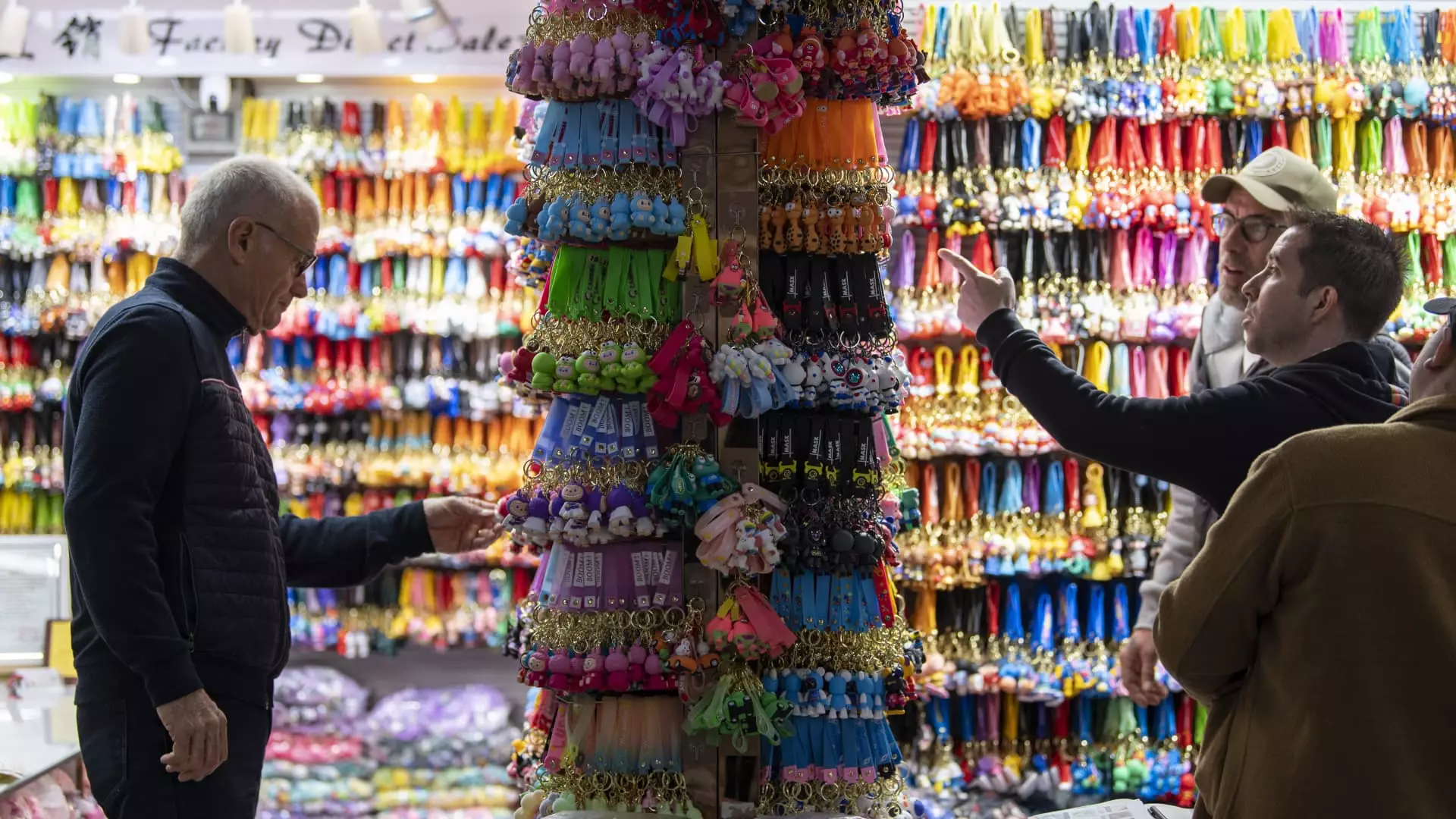Every holiday season, retail fever grips the United States, as wreaths and garlands start to sprout on shelves well before Thanksgiving. However, in 2023, this seemingly innocent tradition faces a formidable obstacle: tariffs. The increasingly contentious trade relations between the U.S. and China have left retailers at a standstill, grinding the once vibrant and profitable Christmas shopping season into a crawl. It’s shocking how something as festive as shopping for the holidays can be beset by the repercussions of geopolitics, particularly tariffs that threaten to choke off supply lines at precisely the wrong moment.
Tariffs enacted by the Trump administration in 2018 remain a lingering specter over today’s marketplace. While aimed at protecting domestic industries, these tariffs have paradoxically revealed just how deeply intertwined our supply chains are with China. Retailers are now forced to contend with crippling uncertainty as they navigate through tariff regulations while trying to keep their shelves stocked with the seasonal goods that consumers have come to expect. Whether it’s shiny red ornaments or the latest electronic gadget, the typical rhythm of the holiday shopping experience is becoming increasingly brittle.
Supply Chains: The Personal Cost of Protecting Markets
Imagine a small business owner, Mary, who runs a quaint toy store in a quaint corner of New England. Every year, the toys she brings in from Chinese suppliers fill her store with delightful options that her customers have come to love. Yet, this year, those familiar products remain conspicuously absent from her inventory. The tariffs imposed mean that costs skyrocket, and producers in China have halted production in uncertainty.
The repercussions are not merely financial; they are personal. Mary is now faced with empty shelves in December, a time when emotional connections with her customers are at their peak. The excitement of walking into a store that overflows with charm and options is being replaced with the uncomfortable reality of abandoned aisles. While the intention behind tariffs was to bolster American businesses, they are in fact crippling small shops like Mary’s, turning the holiday shopping experience—both joyous and comforting—into one defined by scarcity and frustration.
The Delayed Holiday Cheer: An Industry at Risk
The looming question for retailers and consumers alike is whether there’s still time to salvage the festive spirit. Industry voices forewarn of the impending pressure on suppliers. Take, for instance, Cameron Johnson of Tidalwave Solutions; his perspective echoes the sentiments of many in the industry. “If retailers don’t start producing soon,” he warns, “they risk not only Black Friday but the entire Christmas sales period.”
The statistics are alarming. A report by Goldman Sachs indicates that a staggering 36% of U.S. imports from China can only be sourced from there. Even more telling is the fact that over 70% of those items can’t be produced anywhere else, throwing a wrench in holiday preparations. With December fast approaching, procrastination is no longer an option, and this sense of urgency creates a highly volatile market, where rapid shifts in demand can unexpectedly disrupt supply chains even further.
Consumer Impacts: When Joy Turns to Despair
What does it mean for consumers when the traditional joy of Christmas shopping gives way to a sense of desperation? It’s disheartening to see stores with reduced stock, leaving countless families disappointed when shopping for holiday gifts. Many consumers may find themselves scrambling to secure the last of this year’s coveted products while potentially facing inflated prices due to the ripple effects of tariffs.
The shopping environment is no longer about joyfully selecting gifts; it’s a race against time filled with anxiety. Already, some are opting not just to alter their shopping habits but to question the very framework of the retail landscape. Should a lack of supply dictate how we celebrate the season? The holiday spirit is meant to be about togetherness, enjoyment, and pleasure. Instead, it feels increasingly marred by the stress of global economics, leading consumers down a path of frustration rather than fulfillment.
The Tug of War Between Policy and Market Reality
The irony is undeniable: tariffs aimed at supporting domestic production could lead to diminished profitability for American retailers and producers. In an age defined by globalization, pulling back from interdependencies rarely yields favorable outcomes. With retailers preparing for an uphill battle against both limited imports and mounting operational costs, this listless holiday season illustrates complicated ramifications born from a policy framework that often prioritizes short-term fixes over long-term strategies.
As insights from industry leaders flood in, the question of how to navigate the landscape becomes increasingly relevant. Should retailers gamble on stockpiling overpriced goods or play it safe by streamlining their inventory? Uncertainty reigns, and it could ultimately redefine not just this year’s holiday shopping experience but the economic health of businesses across the country.
In a world where the Grinch is more than just a funny cartoon character, the Christmas spirit is held hostage by political decisions. Consumers need clarity and assurance, yet they face continuation of this chaotic tug of war. It’s time for us to reassess what truly matters during the holiday season: community connections far outweigh fleeting economic policies.


Leave a Reply